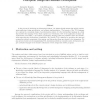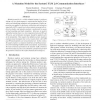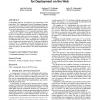156 search results - page 26 / 32 » An Abort-Aware Model of Transactional Programming |
DBPL
1989
Springer
13 years 11 months ago
1989
Springer
In the process of developing an Information System, one passes through stages that include requirements gathering, design specification, and software implementation. The purpose ...
ASPLOS
2011
ACM
12 years 11 months ago
2011
ACM
nt, user-defined objects present an attractive abstraction for working with non-volatile program state. However, the slow speed of persistent storage (i.e., disk) has restricted ...
DATE
2008
IEEE
14 years 2 months ago
2008
IEEE
Mutation analysis is a widely-adopted strategy in software testing with two main purposes: measuring the quality of test suites, and identifying redundant code in programs. Simila...
WWW
2007
ACM
14 years 8 months ago
2007
ACM
Cryptographic protocols are useful for trust engineering in Web transactions. The Cryptographic Protocol Programming Language (CPPL) provides a model wherein trust management anno...
ICFP
2005
ACM
14 years 7 months ago
2005
ACM
We have designed, implemented, and evaluated AtomCaml, an extension to Objective Caml that provides a synchronization primitive for atomic (transactional) execution of code. A fir...



